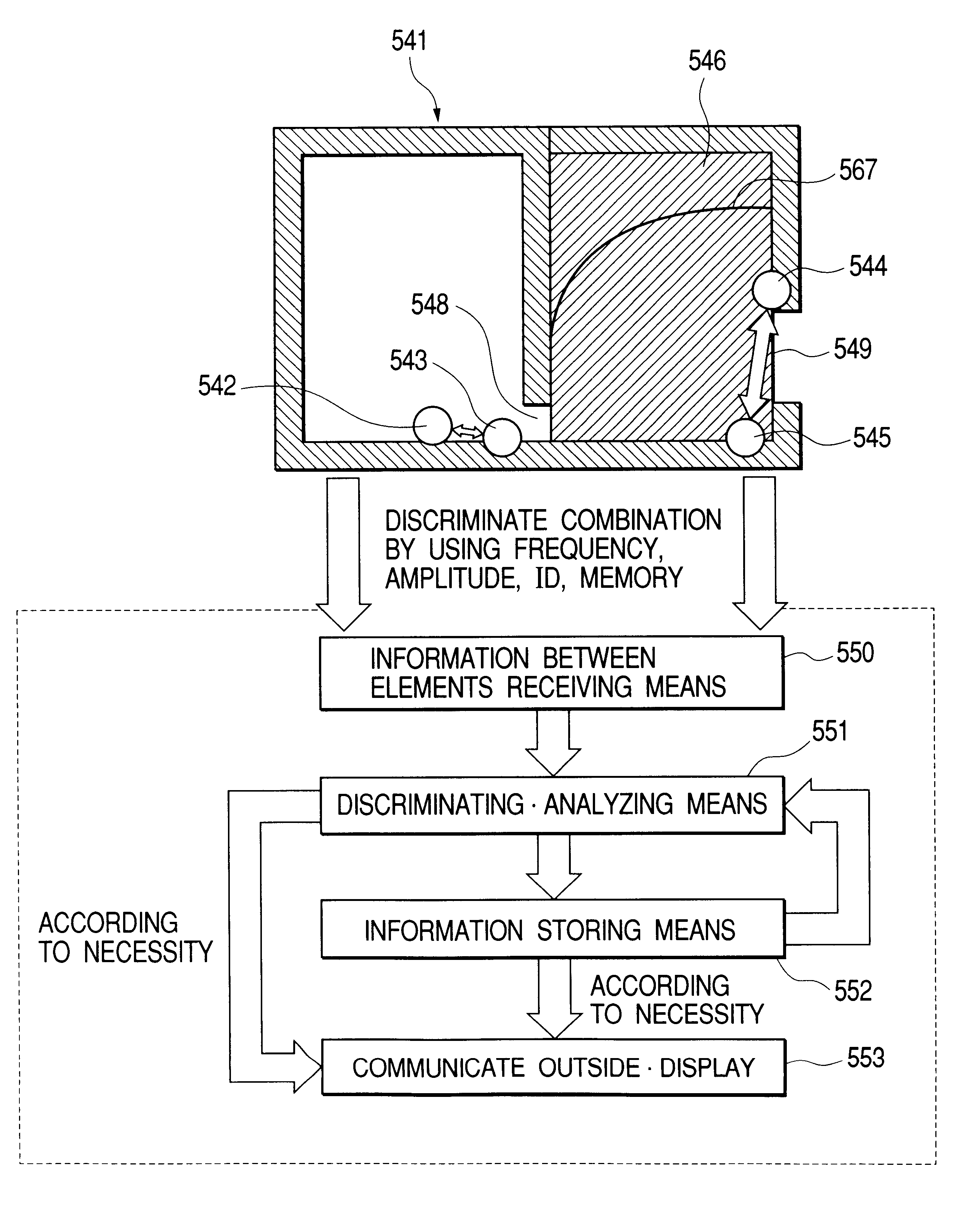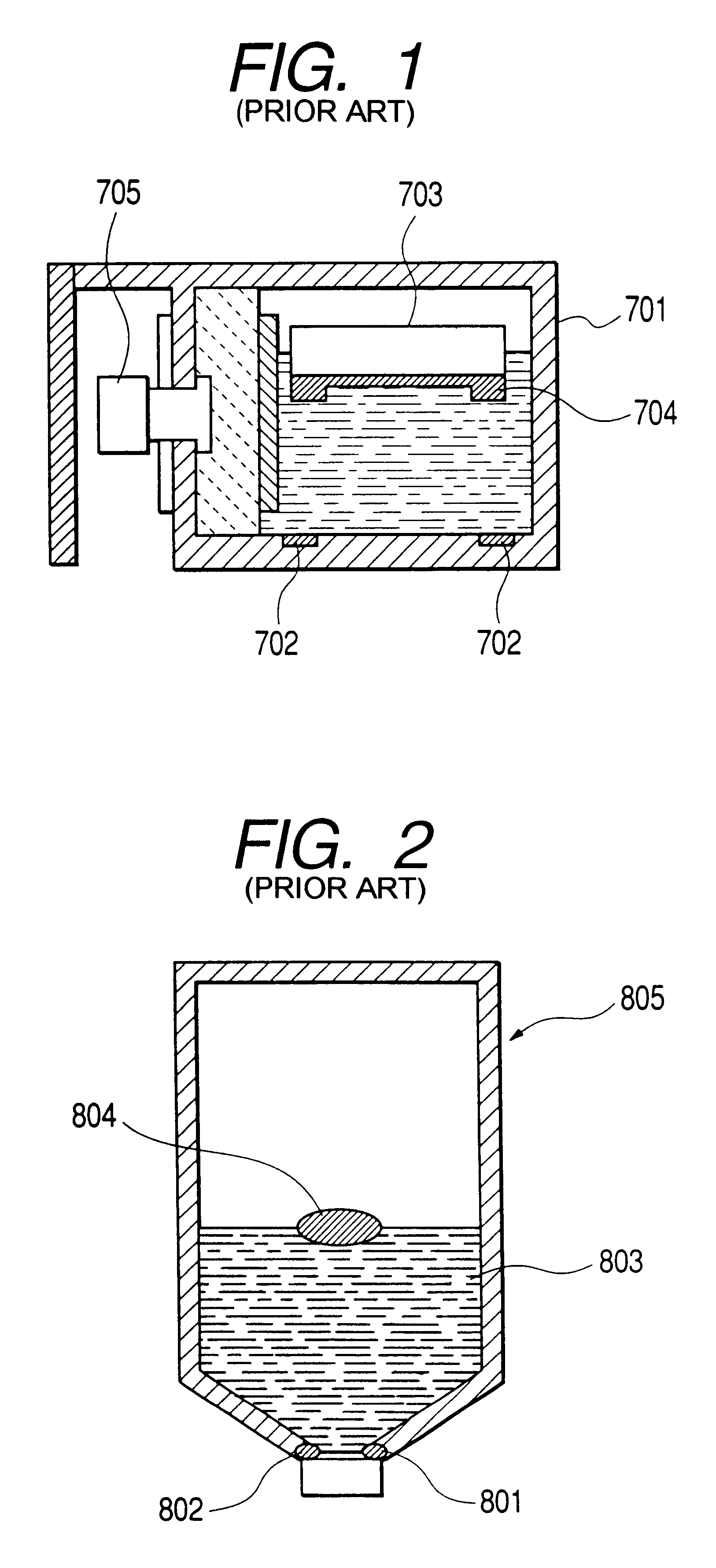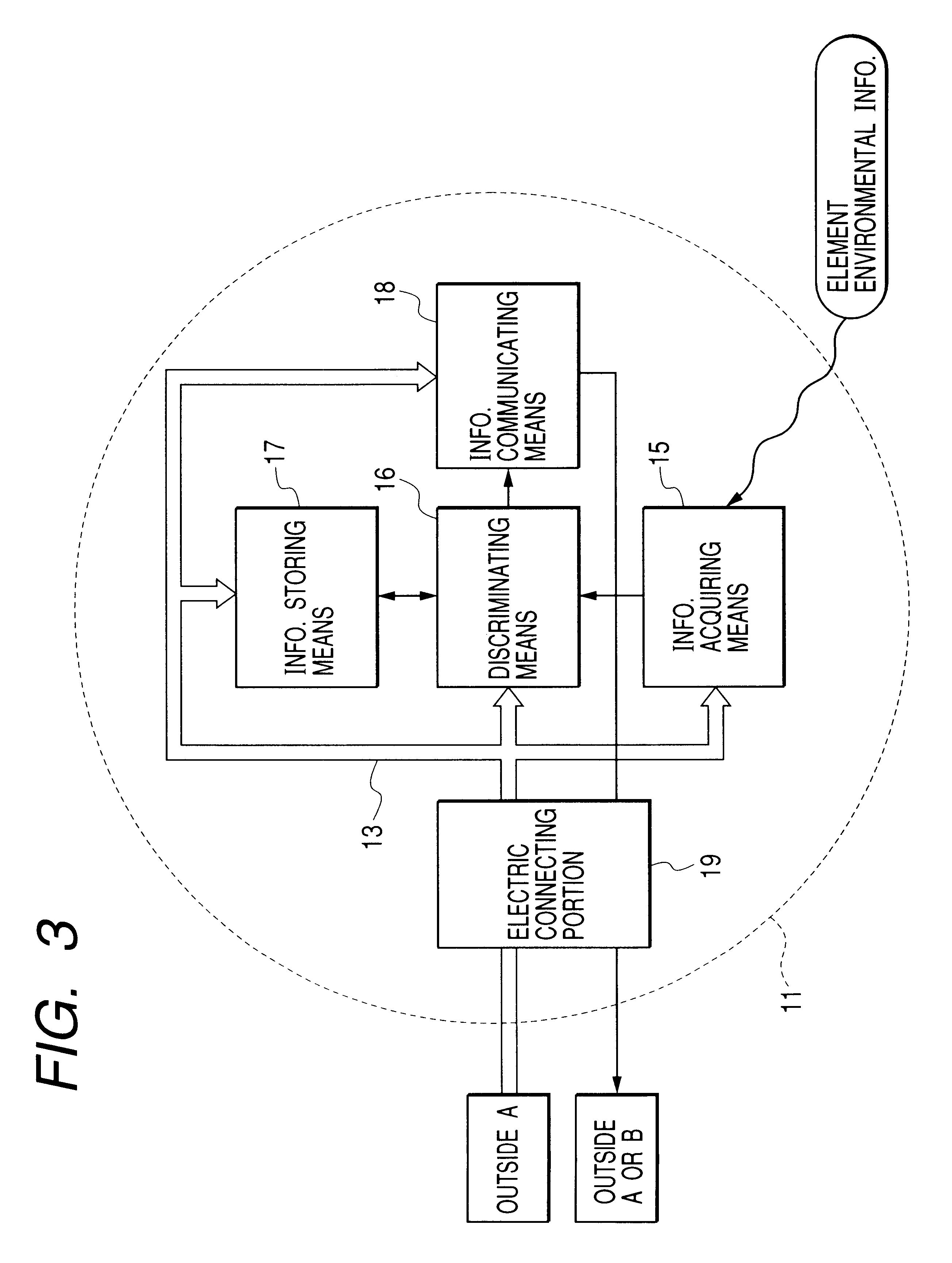Ink tank and ink jet recording apparatus provided with the same
a technology of ink jet recording apparatus and ink tank, which is applied in the direction of spacing mechanisms, semiconductor devices, printing, etc., can solve the problems of inability to find other information on the inside of the tank, inability to detect residual amount, and inability to use ink
- Summary
- Abstract
- Description
- Claims
- Application Information
AI Technical Summary
Benefits of technology
Problems solved by technology
Method used
Image
Examples
seventh embodiment
(Seventh Embodiment)
FIG. 23 is block diagram illustrating an internal configuration and exchanges of information with the outside of a solid semiconductor element according to a seventh embodiment of the present invention. A solid semiconductor element 31 of a form shown in this figure is provided with energy converting means 34 for converting electromotive force 32 supplied in a non-contact state from the outside A toward the element 31 into electricity 33 and buoyance force generating means 35 for generating buoyance force using the electricity acquired by the energy converting means 34, and is disposed in ink in an ink tank.
In such a form, when the electromotive force 32 is given from the outside A toward the element 31, the energy converting means 34 converts the electromotive force 32 into the electricity 33, and the buoyance force generating means generates buoyance force using the electricity 33 to float the element 31 on the liquid level of the ink. This buoyance force not o...
eighth embodiment
(Eighth Embodiment)
FIGS. 26A to 26C are conceptual drawings illustrating a method of using two or more, that is, a plurality of solid semiconductor elements, which is an eighth embodiment of the present invention.
This embodiment has a configuration in which a function of communicating information to the other elements is given to the solid semiconductor elements of the first and the sixth embodiments, a plurality of which are disposed in an object.
In an example of FIG. 26A, a plurality of solid semiconductor elements of the first embodiment are disposed in an object. When electromotive force is supplied form the outside A or B to each element, each element acquires surrounding environmental information, respectively. Then, information acquired by an element 41 is communicated to an element 42, information a and b acquired by the element 41 and the element 42, and subsequent information is sequentially communicated to the next element. A last element 43 communicates all information a...
PUM
 Login to View More
Login to View More Abstract
Description
Claims
Application Information
 Login to View More
Login to View More - R&D
- Intellectual Property
- Life Sciences
- Materials
- Tech Scout
- Unparalleled Data Quality
- Higher Quality Content
- 60% Fewer Hallucinations
Browse by: Latest US Patents, China's latest patents, Technical Efficacy Thesaurus, Application Domain, Technology Topic, Popular Technical Reports.
© 2025 PatSnap. All rights reserved.Legal|Privacy policy|Modern Slavery Act Transparency Statement|Sitemap|About US| Contact US: help@patsnap.com



